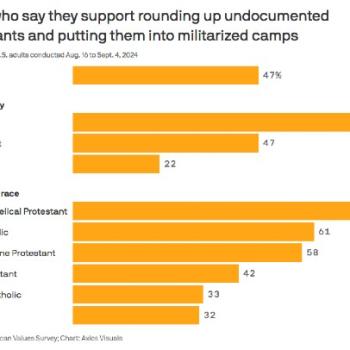Friend of mine sells houses. Her job involves a lot of conversation with customers, and doing her job well means conversing with them in a way that reassures them and makes them feel comfortable.
Occasionally, those conversations take a turn that makes her uncomfortable, suddenly switching into a category we might describe as white people talking to white people when they’re sure there’s no one but white people around. She’s had clients blurt out some appalling things, hateful, ignorant, infuriating statements about African Americans, Asians, Hispanics, gays … you name it. In another context, a non-work setting, their comments would likely have prompted a sharp rebuke from my friend, likely something withering, pointed and laced with just the right amount of profanity.
But that sort of response isn’t an option in the context of her work, where she’s required to keep her cool, to be unfailingly polite, friendly and cheerful. In that context, she’s developed some various other ways of responding. One trick she sometimes uses is to talk about food.
That doesn’t apply in every case, but it works pretty well, for example, for transforming the dynamic of a conversation in which some client has expressed their fear, unease, or flat-out, bald-faced, xenophobic hate in response to the number of South Asian immigrants in our area. My friend acts as though she completely missed the unambiguous animosity of her client’s comment and begins to gush, with cheerful enthusiasm, about the many excellent Indian restaurants in the area and about her one client — lovely woman, a biochemist — who gave her a family recipe for naan bread. Have you ever had naan? I mean the real stuff not store-bought it’s delicious you have to try it I could give you that recipe if you want I’ll bring it Thursday or samosas have you ever had really good samosas?
The baffled client finds himself off-balance, peppered with a series of yes-or-no questions about the wonders of South Asian cuisine as the conversation barrels on with an aggressively cheerful momentum all pointing to the undeniable fact that any true lover of good food would be much happier living around here than in some homogenous gastronomic wasteland with no access to the glorious contributions of so many different cultures. The bewildered bigot winds up unsure exactly what just happened but agreeing that, yes, he probably does owe it to himself to try the masala at the new place off the bypass.
What I like about this trick is the way it counters without confrontation, avoiding triggering the cognitive fight-or-flight impulse that cuts off any possibility of persuasion.
Confrontation can’t always be avoided, and often it should not be avoided — bigots need to regularly encounter firm arguments and condemnation as a reminder that other, truer, happier ways of seeing the world and living in it are available to them. But once we choose confrontation, they circle the wagons mentally, defensively hardening the very attitudes that need to be changed.
Direct confrontation is rarely an effective means of persuading a bigot to change his mind.
It needs to be said, though, that changing a particular bigot’s mind is often not the only priority in an encounter with bigotry, nor the most important one.
It is often more important, depending on the situation, to stand in defense of the would-be victims, to protect others by forcing bigotry to retreat and crawl back under its rock. In those cases, it’s best to pick a fight and to win it, without undue regard for whether or not winning that fight affords the optimal opportunity for the redemption of this particular bigot. In those cases the goal is not primarily to persuade, convert or redeem the person trapped in bigotry, but just to make him go away — to marginalize him and prevent his destructive, harmful views from being able to destroy and harm.
Whenever possible, though, given the option, I’d rather win a convert than win a fight. Whenever possible, I’d prefer to find some way to point out to this poor bastard imprisoned by hate that the door to his cell is unlocked and open and he’s got the option of walking away and being free if he’d only choose to do so. And that’s where nonconfrontational, elliptical approaches like the one my friend uses can be useful.
I don’t just mean her specific trick of steering the conversation toward food — although I think that’s a brilliant tactic and I wonder whether it might work in other contexts. What would happen, for instance, if one were to try that approach at an anti-immigration rally in Phoenix. Imagine wading in amongst the angry protesters and saying, “Can anyone tell me where I can get good mole around here? I don’t mean some corporate Taco-Bell knock off, I mean the authentic stuff.”
My guess is a few of the protesters would be so far gone as to pretend to dislike anything Mexican, but I’d also guess that many others would consider it a point of personal pride that they could recommend some great little out-of-the-way place where the cook uses his grandmother’s recipe for an amazing mole unlike any pitiful imitation folks like me could ever get up in Pennsylvania. I would guess, in other words, that just by changing the angle of the conversation slightly, we could wind up with a bunch of build-a-fence zealots bragging that Arizona is way more Mexican than my state could ever hope to be. That’s interesting. (But then the conversation probably wouldn’t go quite that way if I were Hispanic — which is also interesting, but in a sad way.)
Anyway, what I’m interested in here is other similar tactics for this general approach of responding to bigotry with a disarming approach that is somehow able to sneak past that reinforcing fight-or-flight impulse.
What approaches have worked for you? Do you have any success stories of concessions or conversions from your own encounters with people like my friend’s clients?












